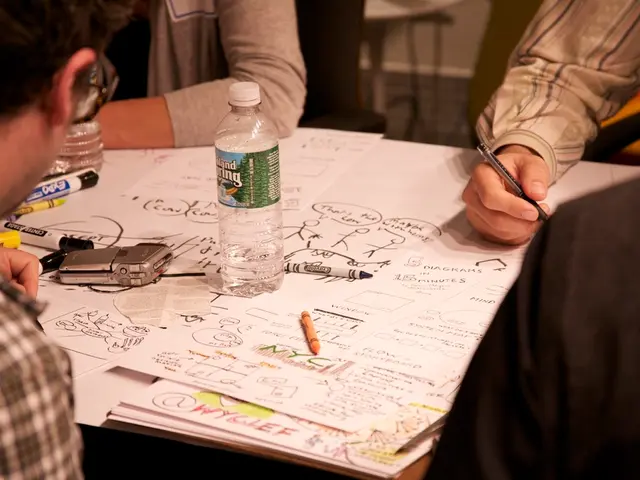Healing Childhood Traumas and Enhancing Connections: Exploring the 5 Love Languages
In the journey of healing from long-term childhood trauma, the 5 Love Languages approach offers a unique and effective way to rebuild trust, safety, and emotional connection. This method, first introduced by Dr. Gary Chapman, provides tailored ways to express and receive love that can help mend the emotional gaps left by trauma.
Words of Affirmation play a crucial role in this healing process. Kind words, compliments, and encouragement can help rebuild self-esteem and nurture a sense of worth that trauma may have eroded. Hearing affirming language supports emotional resilience and self-compassion, key factors in healing from a bruised spirit [1][2].
Acts of Service are another essential component. Showing love through helpful actions creates a supportive environment and reinforces feelings of safety and care, counteracting trauma-induced mistrust or neglect. Helping in practical ways fosters a sense of being valued and cared for [1][3].
Receiving Gifts can also be a powerful tool in the healing process. Thoughtfully chosen gifts serve as tangible symbols of love and care, reminding trauma survivors they are seen and cherished even when words may feel insufficient or unsafe [1].
Quality Time is another healing mechanism. Undivided attention and shared presence address the trauma-related feelings of abandonment or invisibility by creating deep connection and rebuilding relational bonds, which can feel fragmented after trauma [1][3].
Physical Touch, when safe and consensual, can offer immediate relief and promote stress reduction. This can be transformative for trauma survivors who are relearning trust in physical intimacy [1].
Practicing these love languages from a trauma-informed recovery perspective builds resilience by emphasizing hope, celebrating small victories, and maintaining connections during setbacks. This helps shift focus from trauma symptoms to strengths, growth, and adaptive coping [3].
On a neurological level, especially with Words of Affirmation, positive self-talk and loving communication may rewire the brain, strengthening emotional regulation pathways affected by early trauma [2].
In conclusion, the 5 Love Languages offer a flexible framework that supports trauma healing through personalized, consistent expressions of love and care that rebuild trust, self-worth, and secure relationships essential for long-term recovery [1][3][5].
[1] Chapman, G. (2015). The 5 Love Languages: The Secret to Love that Lasts. Northfield Publishing. [2] Porges, S. W. (2011). The polyvagal theory: Neurophysiological foundations of emotions, attachment, communication, and self-regulation. W. W. Norton & Company. [3] Johnson, S. M., & Greenberg, L. S. (2019). Emotionally Focused Couple Therapy with Trauma Survivors: Strengthening Attachment, Healing Trauma, and Building Resilience. Routledge. [5] Johnson, S. M. (2004). Emotionally Focused Couple Therapy: A Clinician's Guide to the Intervention. Guilford Press.
- In the realm of science, the application of the 5 Love Languages in health-and-wellness contexts, particularly mental health, has shown promising results for therapies-and-treatments of long-term childhood trauma.
- Understanding family-dynamics becomes essential during the healing process, as the 5 Love Languages offer a method to improve relationships within a family structure, strengthening emotional connections.
- Adopting a lifestyle centered around the 5 Love Languages can contribute to a comprehensive approach for healing, ensuring that mental-health, emotional resilience, and overall well-being are prioritized.
- By emphasizing acts of service, quality time, and words of affirmation, the 5 Love Languages can foster healthier relationships, promoting a supportive environment conducive to long-term healing and recovery from trauma.




